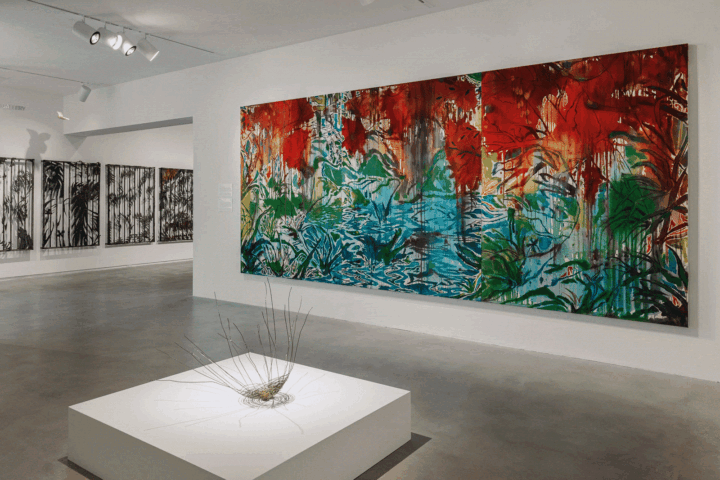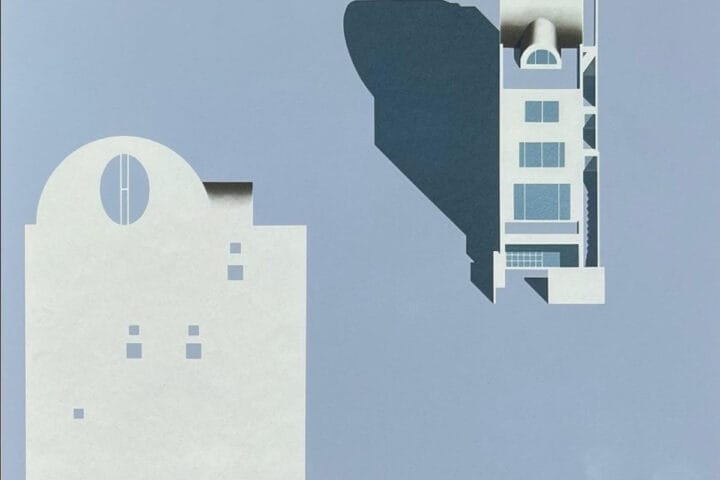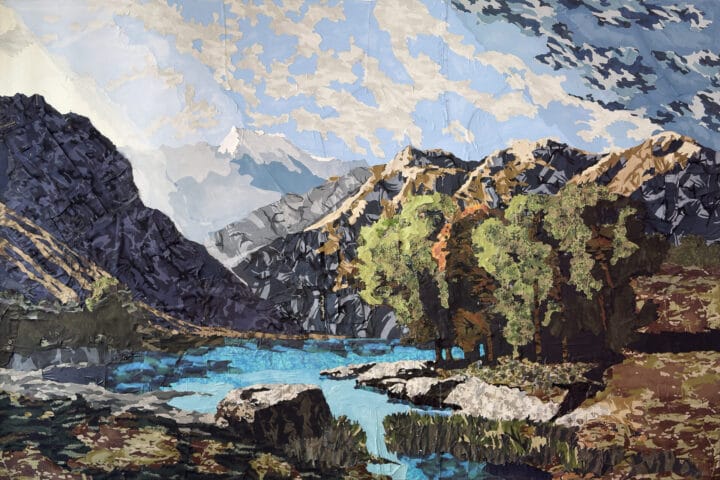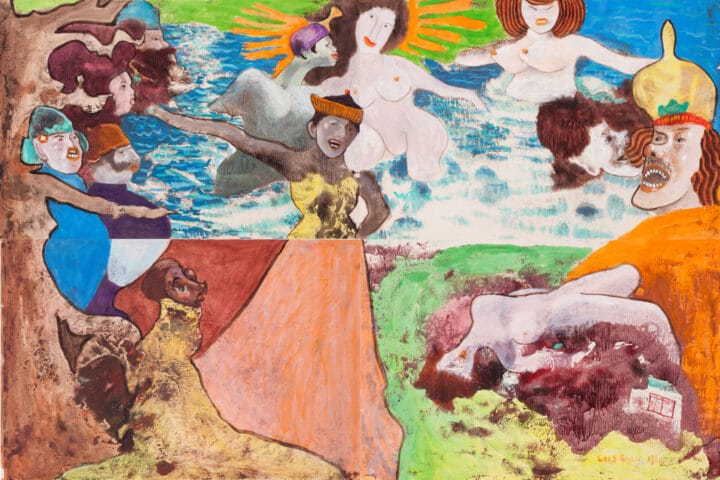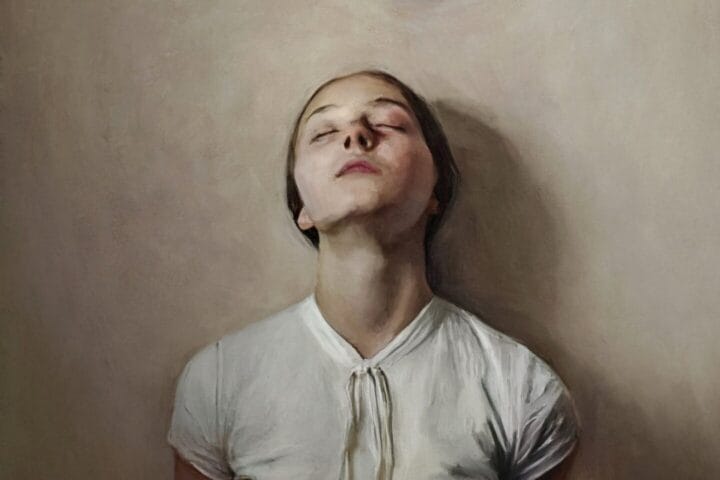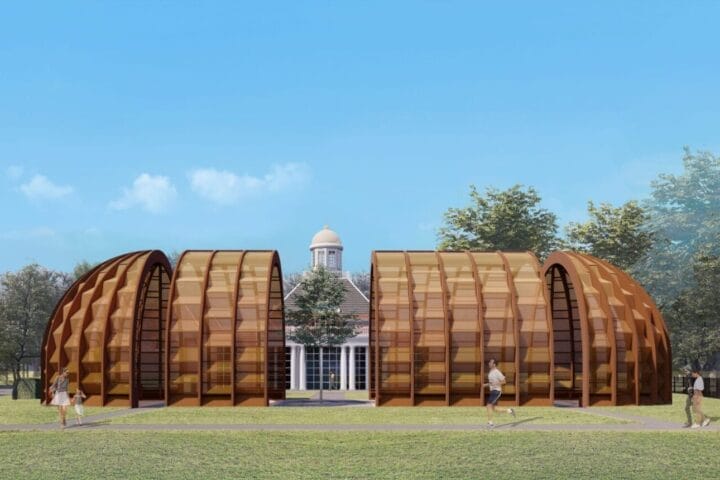Los Angeles – Pace is pleased to present an exhibition of new works by William Monk at its Los Angeles gallery. The exhibition, titled West of Nowhere and on view from September 9 to October 21, will mark the artist’s first solo show in LA since 2015. Monk’s recently released catalogue—produced by Pace Publishing on the occasion of his 2022 exhibition The Ferryman at the gallery’s New York space—will be available to view and purchase on-site at Pace in LA.
Monk is known for his atmospheric, vibrant compositions that feature mysterious and otherworldly forms. The artist’s semi-abstract paintings are deeply engaged with the rich tradition and history of the medium. He frequently creates works as part of different series, drawing on various sources of inspiration connected to his own experience.
West of Nowhere, focusing holistically on notions of transience and liminality, will spotlight two new bodies of work by the artist: large-scale landscapes that relate to the paintings he presented at Pace’s New York gallery last year and small-scale paintings based on Rorschach inkblot tests. Both these series are underpinned by questions of subjectivity and perception, particularly as they relate to ascriptions of meaning.
Like his other bodies of work, Monk’s new paintings evade easy categorization and interpretation. As the artist has said, “Only after the work is complete do I become aware of specific past experiences that helped to inform it— perhaps in the same way that a dream picks up on certain conscious moments and twists them.”
The four landscape paintings that will anchor Monk’s upcoming exhibition with Pace in LA suggest what French anthropologist Marc Augé termed “non-place,” or an anthropological space in which human relationships, histories, and identities are erased. In these works, mountainous landscapes rendered in patchworks of mottled gray, lilac, and ochre hues are partially obscured by groups of centrally situated, vertically oriented pillars that feature washes of color. The paintings in this body of work invite viewers to imagine themselves within the pictorial space while also, paradoxically, denying access to the very landscape depicted—and to any fixed meaning—by way of the pillars.
The six small-scale paintings in the second body of work on view in West of Nowhere directly references inkblots from Hermann Rorschach’s psychological tests, but the abstract, mesmeric shapes in Monk’s works are painted in bright, bold colors. Presenting unusual and psychedelic referents, these paintings reflect the phenomenon of pareidolia, in which the mind seeks to create meaning from indistinct, ambiguous, or nebulous visual stimuli.
William Monk’s (b. 1977, Kingston upon Thames, UK) scenographic works tap into the rich tradition of painting. Monk paints enigmatic and vibrant canvases using starkly divisional compositions. The artist often works in extensive series that gradually evolve over time. His paintings carry irregular intensities of detail, line, foreground, and background.
A sense of repetition breaks down his figuration, creating visual mantras in which the human scale of the work increases this subtlety rather than amplifying the model. This rhythm can be traced throughout Monk’s work, surrendering figurative logic to arrive at something stranger and more powerful. Atmospheric and energetic, Monk’s paintings invite a more direct physical connection, drawing in the space between our inner and outer realms of experience.
William Monk lives and works in New York. He was awarded the Koninklijke Prijs voor Vrije Schilderkunst (Dutch Royal Award for Painting) in 2005 and the Jerwood Contemporary Painters award in 2009. Monk’s work has been exhibited at Pace Gallery, Hong Kong, London, and New York; Fries Museum, Leeuwarden, Netherlands; Museum Het Valkhof, Nijmegen, Netherlands; Kunstmuseum, The Hague; Van Gogh Museum, Amsterdam; GRIMM, New York and Amsterdam; James Cohan Gallery, New York; Kohn Gallery, Los Angeles; Norwich University, Norwich; PSL, Leeds; and Summerfield Gallery, Cheltenham, London. His work can be found in the collections of the Kunstmuseum, The Hague; HE Art Museum, Foshan, China; AkzoNobel Art Foundation, Amsterdam; Roberts Institute of Art, London; Fries Museum, Leeuwarden; ING Art Collection, Amsterdam; Whitworth Art Gallery, University of Manchester, Manchester; and in many private collections.
Pace is a leading international art gallery representing some of the most influential contemporary artists and estates from the past century, holding decades-long relationships with Alexander Calder, Jean Dubuffet, Barbara Hepworth, Agnes Martin, Louise Nevelson, and Mark Rothko. Pace enjoys a unique U.S. heritage spanning East and West coasts through its early support of artists central to the Abstract Expressionist and Light and Space movements.
Since its founding by Arne Glimcher in 1960, Pace has developed a distinguished legacy as an artist-first gallery that mounts seminal historical and contemporary exhibitions. Under the current leadership of CEO Marc Glimcher, Pace continues to support its artists and share their visionary work with audiences worldwide by remaining at the forefront of innovation. Now in its seventh decade, the gallery advances its mission through a robust global program— comprising exhibitions, artist projects, public installations, institutional collaborations, performances, and interdisciplinary projects. Pace has a legacy in art bookmaking and has published over five hundred titles in close collaboration with artists, with a focus on original scholarship and on introducing new voices to the art historical canon.
Today, Pace has eight locations worldwide, including a European foothold in London and Geneva as well as Berlin, where the gallery established an office in 2023. Pace maintains two galleries in New York—its headquarters at 540 West 25th Street, which welcomed almost 120,000 visitors and programmed 20 shows in its first six months, and an adjacent 8,000 sq. ft. exhibition space at 510 West 25th Street. Pace’s long and pioneering history in California includes a gallery in Palo Alto, which was open from 2016 to 2022. Pace’s engagement with Silicon Valley’s technology industry has had a lasting impact on the gallery at a global level, accelerating its initiatives connecting art and technology as well as its work with experiential artists. Pace consolidated its West Coast activity through its flagship in Los Angeles, which opened in 2022. Pace was one of the first international galleries to establish outposts in Asia, where it operates permanent gallery spaces in Hong Kong and Seoul, along with an office and viewing room in Beijing.

